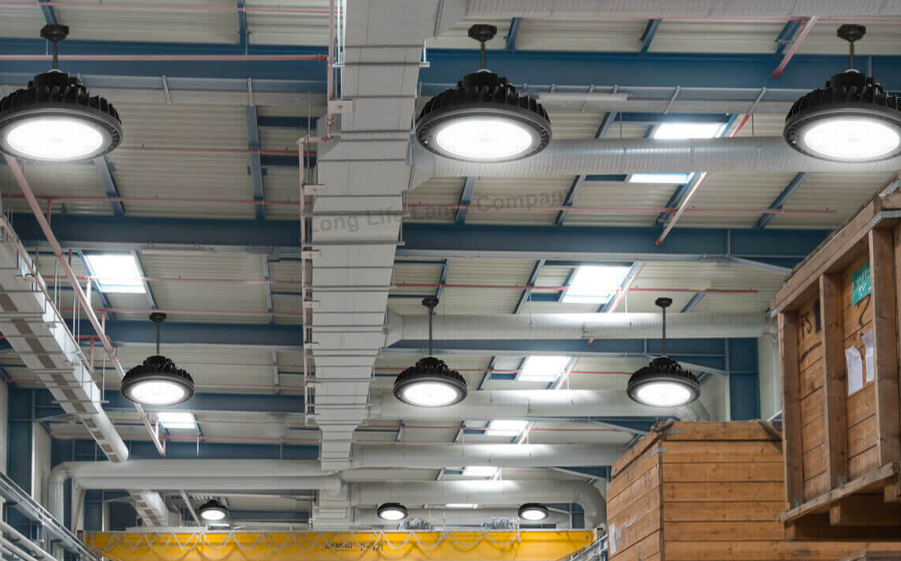
When it comes to lighting large indoor areas like warehouses, factories, gyms, or sports halls, not all fixtures are built to handle the challenge. These spaces often feature high ceilings, wide-open floors, and continuous activity that requires bright, reliable, and energy-efficient lighting. Traditional lighting systems—such as fluorescent or metal halide fixtures—tend to fall short, whether it’s because of high operating costs, uneven brightness, or constant maintenance needs.
That’s why more facility managers are turning toward high bay LED lights as a long-term, cost-effective solution. These advanced fixtures are designed to meet the demands of large spaces while improving safety, reducing expenses, and delivering consistent performance.
Brightness That Works With Large Spaces
Picture yourself standing in a warehouse with ceilings reaching 40 feet high. A standard light bulb simply wouldn’t push enough brightness to the floor, leaving shadows or uneven patches of light. In large facilities, it’s not just about having bright lights—it’s about achieving even distribution across a wide area.
This is where high bay LEDs excel. They produce high lumen output with carefully engineered beam angles that spread light uniformly throughout tall spaces. Instead of harsh bright spots or dim corners, workers experience balanced lighting across the entire facility.
For example:
-
Employees sorting products in storage aisles can read labels without straining their eyes.
-
Forklift drivers can safely maneuver without unexpected shadows creating blind spots.
-
Sports halls and gyms enjoy consistent illumination that enhances visibility for both players and spectators.
By eliminating dark zones, high bay LEDs create an environment where tasks can be performed more effectively and with greater safety.
Energy Savings That Add Up
One of the most well-known benefits of high bay LEDs is their energy efficiency. They use far less electricity compared to traditional fixtures, which means significant cost savings for businesses.
Let’s take a practical example:
-
A warehouse using 100 traditional fixtures at 400 watts each consumes 40,000 watts when all lights are on.
-
Running for 10 hours a day, that equals 400 kilowatt-hours daily.
-
Now, switch to 100 high bay LEDs at 150 watts each. That’s only 15,000 watts total, or 150 kilowatt-hours daily.
The difference is striking. Over the course of a year, the energy reduction can translate into thousands of dollars saved, depending on local electricity rates. For large-scale facilities that operate long hours, this efficiency can free up resources for other operational priorities.
Longevity and Reduced Maintenance
Lighting maintenance in high-ceiling environments isn’t as simple as replacing a bulb at home. In warehouses and factories, replacing a light often requires specialized lifts, ladders, and adherence to safety protocols—interrupting workflow and adding labor costs.
Traditional fixtures may burn out in just a year or two, creating a recurring maintenance burden. High bay LEDs, however, are designed to last. Many fixtures operate for 50,000 hours or more. For a facility running lights 12 hours daily, that equates to well over a decade of service before replacements are needed.
Fewer replacements mean:
-
Less disruption to daily operations.
-
Lower maintenance expenses.
-
Greater long-term return on investment.
How Lighting Affects Safety and Productivity
Lighting isn’t just about visibility—it directly affects workplace safety, comfort, and productivity. Poor lighting increases the risk of accidents, whether it’s trips and falls, machinery mishandling, or misreading important labels. On the other hand, a well-lit environment supports alertness, reduces mistakes, and fosters confidence among employees.
Consider a distribution center where packages move constantly:
-
In a poorly lit aisle, a worker might misread a label or fail to see an obstacle on the floor.
-
In a brightly and evenly lit aisle, tasks are performed more quickly and with fewer errors.
The difference is not just convenience—it’s about preventing costly accidents and improving efficiency across operations. Good lighting also reduces eye strain and fatigue, allowing workers to stay productive throughout their shifts.
Why High Bay LEDs Make Business Sense
When businesses consider new facility upgrades, cost often drives the decision. High bay LEDs typically involve a higher upfront cost than traditional lighting. However, when energy savings, reduced maintenance, and productivity improvements are factored in, the long-term value becomes clear.
-
Energy savings can offset the purchase price in just a few years.
-
Maintenance reductions mean fewer interruptions and lower operational costs.
-
Productivity gains from better lighting lead to smoother operations.
In other words, high bay LEDs aren’t just a purchase—they’re a strategic investment in the efficiency and success of the business.
Final Thoughts
Large indoor spaces demand lighting solutions that are built for scale, and high bay LED lights meet that demand better than outdated options. They provide bright, consistent illumination, cut down on energy use, last longer with minimal maintenance, and directly contribute to safer and more productive work environments.
For warehouses, factories, gyms, and sports halls, high bay LEDs go beyond being a cost-saving measure—they’re a practical tool for improving how people work, move, and interact within a facility.
Ultimately, the decision to switch is not just about keeping the lights on. It’s about creating an environment where safety is prioritized, operations run smoothly, and long-term savings are realized. For forward-thinking businesses, investing in high bay LED lighting is an investment in a brighter, more sustainable, and more productive future.